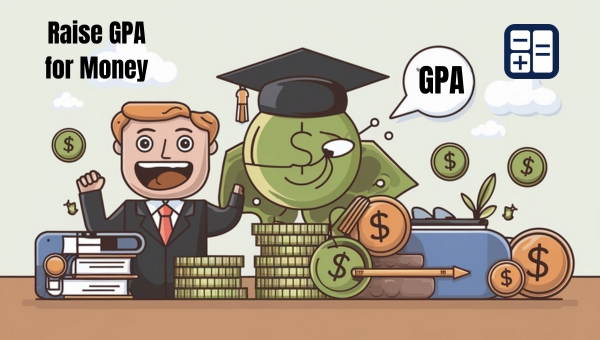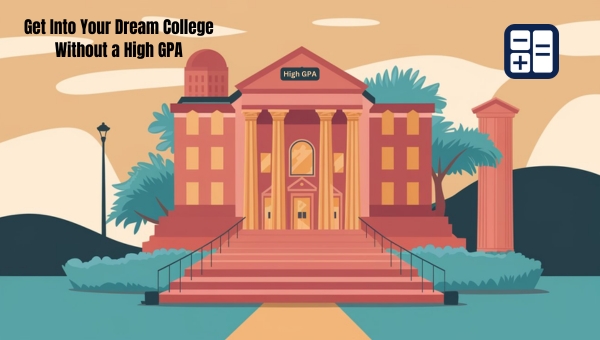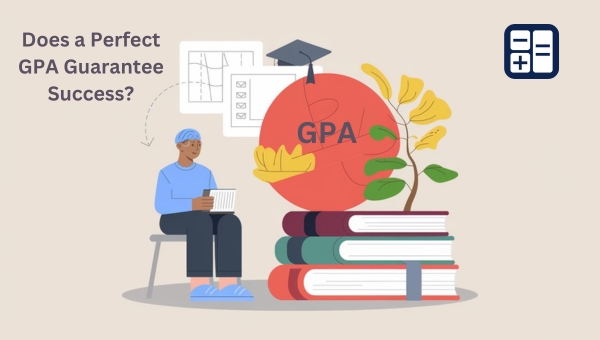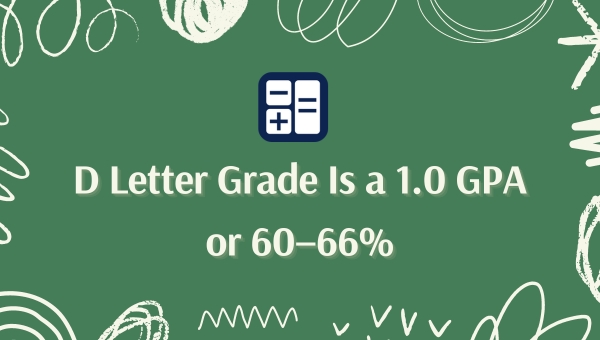2.4 GPA Is a C Letter Grade or 73–76%
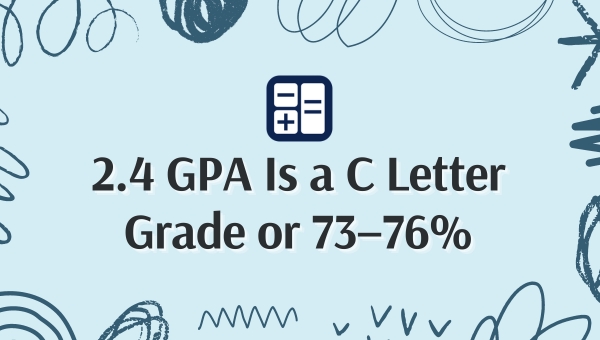
When you hear that a 2.4 GPA equates to a C letter grade, translating to a 73-76% range, it’s clear that students are treading the line between passing and excellence. This GPA can significantly affect high school students’ college prospects, limiting their choices.
So, what does this mean for you or your student, and how can you navigate this academic landscape to improve those numbers? Let’s explore the implications of a 2.4 GPA and uncover actionable strategies to boost academic performance and broaden future opportunities.
What is a 2.4 GPA?
Understanding a 2.4 GPA is essential if you’re assessing your academic standing or planning your next steps. A 2.4 GPA, on a 4.0 scale, represents a C average. This means that your grades are generally in the 73-76% range. It’s a bit below the middle of the grading scale, but it shows that you’re passing your courses.
Having a 2.4 GPA indicates there’s room for improvement. You might find some subjects challenging, or maybe you’re not fully applying yourself. It’s important to identify the reasons behind this GPA so you can address them effectively. Are you struggling with certain subjects, or is it a matter of time management?
Pinpointing the exact issues will help you create a plan to raise your GPA.
While a 2.4 GPA mightn’t open the doors to top-tier colleges, it doesn’t mean your educational journey is over. Many schools and programs look at more than just grades. They consider extracurricular activities, personal statements, and letters of recommendation.
What does a 2.4 GPA mean for high school students?
With a 2.4 GPA, you might find that your options for colleges are more limited. Safety schools, where acceptance rates are higher, could be more within reach, while target schools may be a bit challenging but still possible.
Dream schools, however, might require significant improvement in your GPA or other strong aspects of your application to consider you.
Safety Schools
A 2.4 GPA mightn’t seem impressive, but it doesn’t spell the end of your academic aspirations. You can still find great opportunities by focusing on safe schools—colleges where your GPA meets or exceeds the average admission requirements. These schools can provide a solid education and a positive college experience.
Here’s what you should consider when looking at safety schools:
- Admission Rates: Look for schools with higher acceptance rates, typically above 70%. These institutions are more likely to welcome students with a 2.4 GPA.
- Support Services: Ensure the school offers robust academic support services such as tutoring, advising, and career counseling. These resources can help you thrive academically and professionally.
- Community Colleges: Don’t overlook community colleges. They often have open admission policies and can serve as a stepping stone to a four-year university.
- Fit and Feel: Visit campuses if possible. Make sure you feel comfortable and see yourself fitting into the student community. A supportive environment can make a significant difference in your college success.
Target Schools
Achieving a 2.4 GPA in high school might initially seem limiting when considering target schools, but don’t lose hope. A 2.4 GPA translates to a C letter grade, or 73-76%. While it may not place you at the top of the class, it’s still possible to find colleges that fit your academic profile.
Here’s what you can do to improve your chances:
- Research Schools with Flexible Admissions: Look for colleges that evaluate applications holistically, considering factors beyond GPA, such as extracurricular activities and personal statements.
- Boost Your Test Scores: Strong SAT or ACT scores can compensate for a lower GPA. Focus on preparing for these tests to showcase your academic potential.
- Strengthen Your Application: Highlight your unique experiences, skills, and passions in your application essays. Admissions committees appreciate well-rounded students.
- Consider Community Colleges: Starting at a community college and transferring to a four-year institution later can be a great strategy. It allows you to prove your academic abilities and improve your GPA.
Dream Schools
Dreaming big is essential, even with a 2.4 GPA. You might think a 2.4 GPA limits your options, but it doesn’t have to.
Many students with a similar GPA have found ways to get into their dream schools by focusing on other strengths and showcasing their unique qualities.
Here’s how you can increase your chances:
- Strong Extracurriculars: Get involved in clubs, sports, or community service. Colleges love well-rounded students who demonstrate leadership and commitment.
- Personal Statement: Write a compelling personal essay. Share your story, challenges, and how you’ve grown. Admissions officers appreciate authenticity and resilience.
- Letters of Recommendation: Secure strong letters from teachers or mentors who can vouch for your character, work ethic, and potential. Personal endorsements can tip the scales in your favor.
- Improved Test Scores: Focus on standardized tests like the SAT or ACT. High scores can offset a lower GPA and demonstrate your academic capabilities.
Proven Tips to Get a 2.4 GPA
To achieve a 2.4 GPA, you need to sharpen your study habits and manage your time effectively.
Focus on taking clear, organized notes and actively participate in class discussions.
Incorporate stress reduction practices to keep your mind fresh and ready to learn.
Study Habits Improvement
When it comes to improving your study habits to achieve a 2.4 GPA, adopting proven strategies can make a significant difference. Start by creating a dedicated study space free from distractions. A clutter-free environment helps you concentrate better and makes studying more effective.
Next, break your study material into manageable chunks. Don’t try to cram everything in one sitting. Use methods like the Pomodoro Technique, which involves studying for 25 minutes, then taking a 5-minute break. This keeps your mind fresh and focused.
Active reading is another key technique. Don’t just passively read your textbooks; instead, highlight important points, make notes, and ask questions about the material. This will deepen your understanding and aid retention.
Additionally, practice retrieval by testing yourself regularly. Flashcards, practice quizzes, and summarizing information in your own words can reinforce what you’ve learned.
Lastly, form or join a study group. Collaborating with others can provide new perspectives and help clarify difficult concepts. Just ensure the group stays on topic and doesn’t turn into a social gathering.
Time Management Techniques
Ever wonder how you can juggle all your responsibilities and still hit that 2.4 GPA target? Effective time management is your answer. Start by creating a weekly schedule.
Allocate specific time slots for studying, attending classes, and completing assignments. Use tools like planners or digital apps to keep track of deadlines and commitments.
Prioritize your tasks. Identify what’s most important and tackle those first. Avoid multitasking; it often leads to mistakes and wasted time. Instead, focus on one task at a time, completing it before moving on to the next.
Break your study sessions into manageable chunks. The Pomodoro Technique, where you study for 25 minutes and then take a 5-minute break, can boost your productivity. During breaks, do something relaxing but brief, like stretching or grabbing a snack.
Set realistic goals. Don’t aim for perfection; aim for progress. Reward yourself when you meet your goals to stay motivated.
Learn to say no. It’s important to recognize your limits. If a social event or extra project will derail your study schedule, it’s okay to decline.
Effective Note-Taking Methods
Mastering time management is just one piece of the puzzle; effective note-taking is another vital skill to help you hit that 2.4 GPA target. Start by organizing your notes in a way that makes sense to you. Use headings, bullet points, and highlight key concepts to easily locate important information later.
Don’t just copy everything verbatim; instead, paraphrase and summarize to enhance understanding and retention. Use the Cornell Note-Taking System to structure your notes efficiently. Divide your page into three sections: notes, cues, and summary. This layout helps you capture main ideas and review them quickly.
During lectures, focus on identifying the main points and supporting details rather than trying to write down every word. Review your notes regularly. This habit reinforces what you’ve learned and makes exam preparation easier.
Set aside time each week to go over your notes and fill in any gaps. You can also create mind maps or diagrams to visualize the connections between different concepts.
Active Participation Strategies
Engaging actively in class discussions and activities can significantly boost your chances of achieving a 2.4 GPA. Start by sitting at the front of the classroom. It helps you stay focused, shows your interest, and makes it easier to interact with your instructor.
Don’t hesitate to ask questions. When you’re confused or curious, speaking up can clarify concepts not just for you but for your classmates too.
Participate in group projects and study groups. Collaboration not only reinforces your understanding but also exposes you to different perspectives. Sharing ideas and debating topics can deepen your grasp of the material.
Make a habit of contributing to class discussions. Even if you’re unsure, offering your thoughts can demonstrate your engagement and willingness to learn.
Prepare before class by reading assigned materials and reviewing notes. This preparation allows you to participate meaningfully. Instructors notice students who are prepared and engaged, which can positively affect your grade.
Lastly, take advantage of office hours. One-on-one time with your instructor can provide personalized guidance and clarify any lingering doubts.
Stress Reduction Practices
Managing stress efficiently can be a game-changer when aiming for a 2.4 GPA. First, establish a regular sleep schedule. Aim for 7-8 hours of sleep each night to boost concentration and memory retention. You’ll find it easier to focus during study sessions and exams.
Next, practice mindfulness techniques such as deep breathing exercises and meditation. Spend just 5-10 minutes a day on these practices to reduce anxiety and maintain a calm, focused mind. Apps like Headspace or Calm can guide you through these exercises.
Physical activity is another proven stress reducer. Engage in at least 30 minutes of moderate exercise three times a week. Activities like jogging, yoga, or even brisk walking can elevate your mood and energy levels, making study time more productive.
Don’t underestimate the power of a balanced diet. Consuming nutritious foods like fruits, vegetables, lean proteins, and whole grains can stabilize your mood and energy. Avoid excessive caffeine and sugary snacks—they lead to energy crashes that hamper your study efforts.
How to Raise Your GPA Fast?
Raising your GPA fast requires a strategic approach and a commitment to smarter study habits. First, prioritize your coursework by identifying which subjects need the most attention. Focus on high-credit classes since they impact your GPA more significantly. Create a study schedule that allocates extra time to these critical subjects, and stick to it.
Next, engage with your professors and ask for feedback on your assignments and exams. Understanding where you’re going wrong can help you make targeted improvements. Don’t hesitate to seek help through tutoring services or study groups; they can provide different perspectives and clarify confusing material.
Use active study techniques like summarizing information in your own words, teaching the material to someone else, or creating flashcards. These methods enhance retention and understanding.
Also, take advantage of online resources like Khan Academy or Coursera to reinforce your learning.
Lastly, consider retaking classes where you scored poorly. Most schools allow grade replacement, meaning the new grade will overwrite the old one, boosting your GPA.
Conclusion
So, now you know that a 2.4 GPA is a C average and might limit your college options. But don’t worry! By understanding where you stand and using proven strategies to improve, you can boost your GPA and strengthen your college application.
Stay focused, seek help when needed, and consistently work hard. With dedication and the right plan, you can raise your GPA and open up more opportunities for your future. Keep pushing forward!
